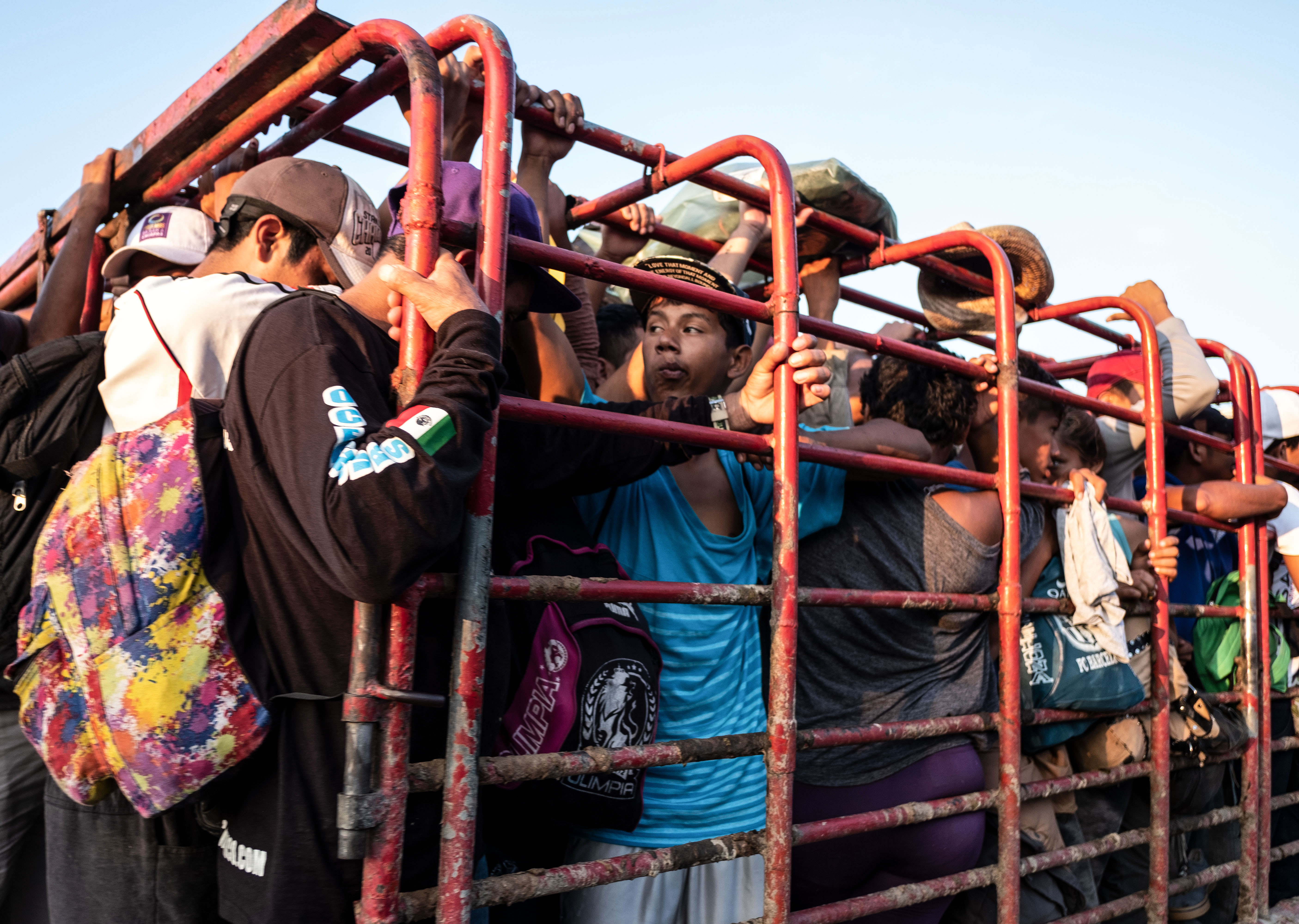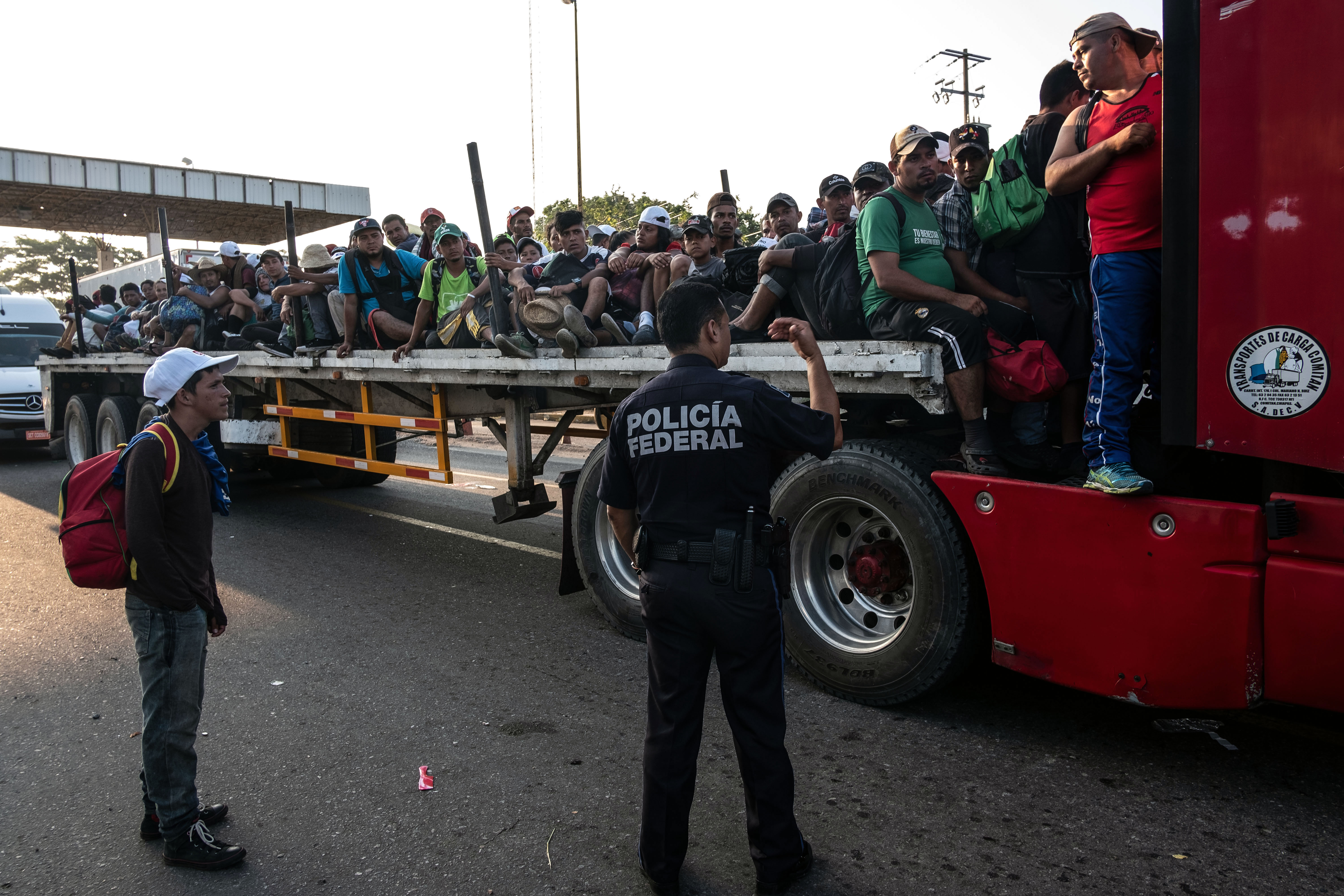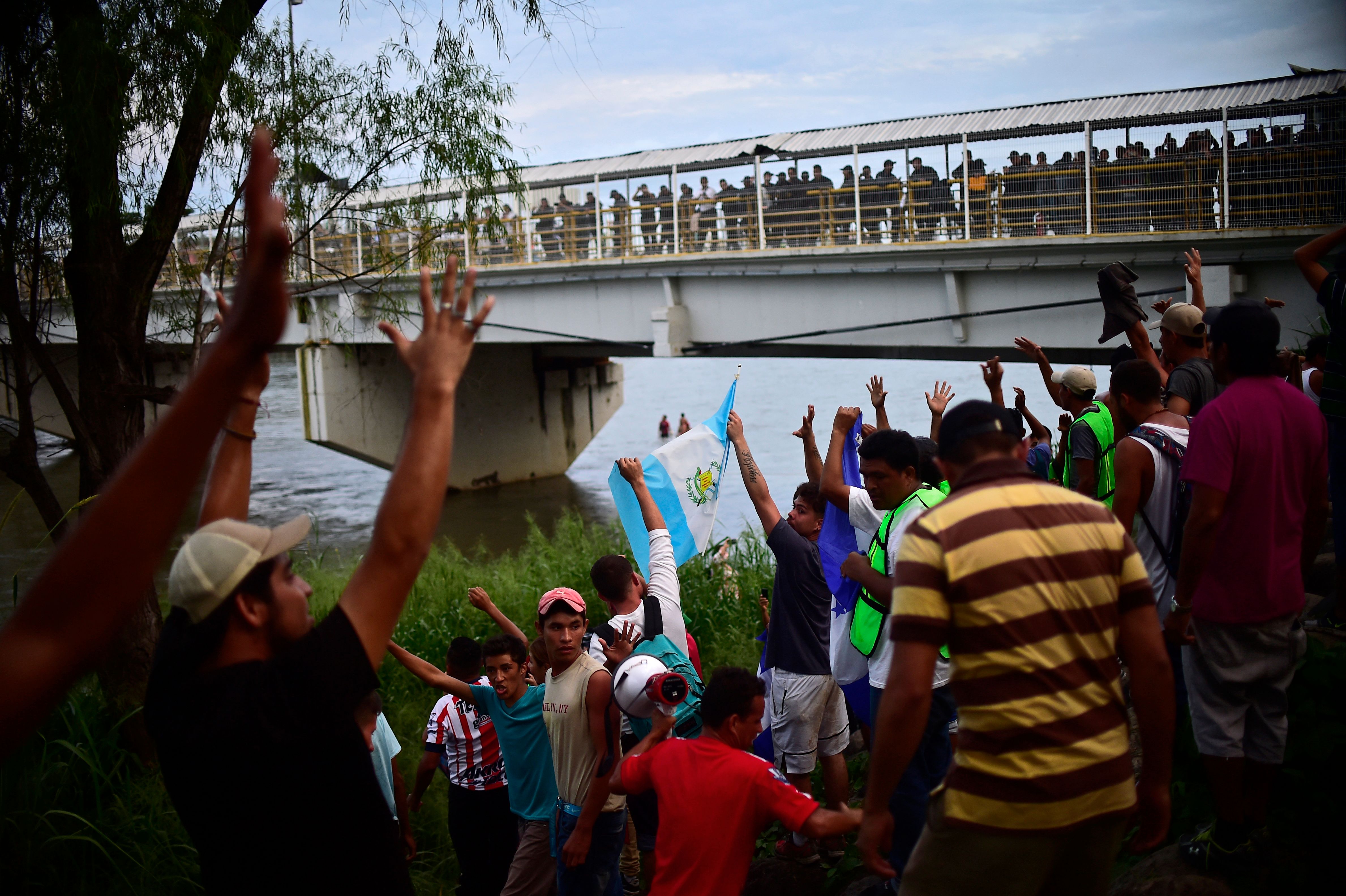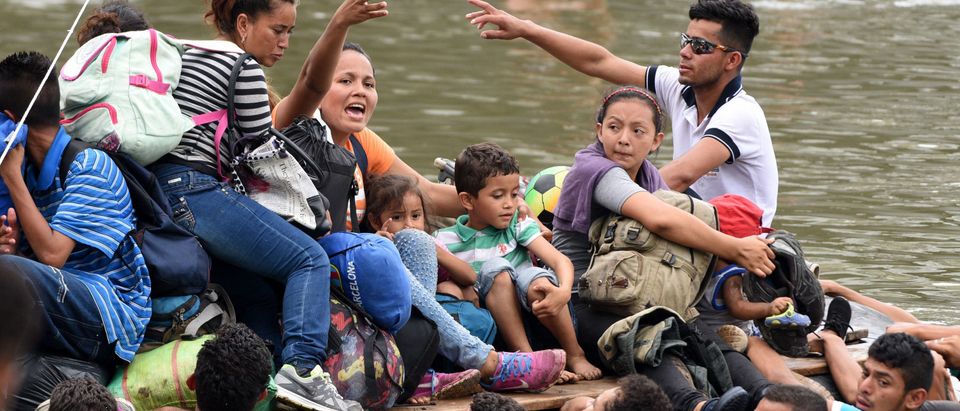President Donald Trump, spurred to the presidency by national skepticism of unchecked immigration, now faces an advancing U.S.-bound caravan of would-be illegal immigrants marching through Mexico, one he’s determined to stop.
What he’ll do, precisely, is less clear.
The caravan of nearly 6,000 seeks U.S. resident status largely under the auspices of economic asylum. The legal challenge consists of migrants illegally crossing the U.S.-Mexico border and then claiming a “credible fear” of return to their home country.

Photo by Guillermo Arias / AFP
What Are The Options Once The Caravan Gets Here?
Administration officials speaking on the condition of anonymity conceded to TheDC they have few good options once the caravan arrives. The options floating around internally revolve around the use of executive action with an attempt to bar asylum claims and fortifying legal ports of entry for orderly administrative processing (one that would presumably end for most in flights back, should Trump get his way).
Trump hinted at his intent in a Monday night interview on Fox News saying:
If they [apply] for asylum, we’re going to hold them until such time as their trial takes place … We’re going to put tents up all over the place; we’re not going to build structures and spend all of this, you know, hundreds of millions of dollars — we’re going to have tents; they’re going to be very nice and they’re going to wait and if they don’t get asylum, they get out.
One of the major considerations includes a presidential proclamation specifically barring the caravan from entering the country, officials said.
The administration signaled its intent to deploy 5,200 additional troops to assist with border enforcement. These troops will bring dozens of miles of additional temporary fencing, provide helicopter surveillance assistance and other logistical support to Border Patrol.
Customs and Border Patrol commissioner Kevin McAleenan emphasized to reporters Monday that the deployment was sent to assist authorities in case of any attempted breakthrough at the border by the caravan, as was seen at the Mexican-Guatemalan border.
The large show of force indicates the administration will likely try to force any would-be migrants to seek asylum at legal ports of entry and will use the enhanced military presence to control the flow of migrants into the country.

GUILLERMO ARIAS/AFP/Getty Images)
The Drawbacks:
The Trump administration maintains, however, that as many temporary changes, troop deployments, and executive actions it takes, their hands are largely tied by U.S. asylum laws on the books and laws disallowing detention of families for long stretches of time.
Center for Immigration Studies executive director Mark Krikorian declared Friday that ultimately only Congress can truly fix the laws required to stop the caravan.
“The caravan, and new ones forming behind it, are merely symptoms,” Krikorian said, explaining “the problem is an overly permissive asylum system (including rules for dealing with illegal-alien minors) that has become the preferred way to penetrate our borders for those with no other way to do so. And only Congress can fix that.”
Experts also note that asylum seekers who enter the U.S. illegally are subject to the least amount of scrutiny of nearly any foreign national who enters the country. Furthermore, the asylum processing agencies of the Executive Office for Immigration Review and U.S. Citizenship and Immigration Services are rife with fraud and abuse, a 2015 General Accountability Office report found.
The GAO concluded that the USCIS “does not capture other key information that could be used to detect fraud,” and that “immigration judges are largely reliant on ICE attorneys and their own review of the record to flush out fraud.”

Photo by Pedro Pardo / AFP
How We Got Here:
The utterance of “credible fear” and other “magic words” by migrants triggers protocols of U.S. asylum law that require adjudication before a court. The years-long process of adjudication poses a further problem for authorities when it comes to detention of these migrants, particularly those who arrive as part of a family unit.
Administration officials told TheDC the primary challenge to the government stems from legal restrictions on detaining parents and children together. These restrictions require policymakers to choose between separating children from their parents and separately detaining them or releasing them into the interior of the country to await a court date — a policy loophole that critics deride as “open borders.”
The Obama administration briefly separated families at the border for detention but eventually adopted the policy known as “catch and release,” in which migrants were allowed to live unmolested in the U.S. while they awaited their court date. This policy resulted in the release of hundreds of thousands of illegal immigrants into the U.S. interior.
DHS officials told TheDC news of the loophole in U.S. law quickly trickled back to Central America, prompting a new surge of family units at the border throughout 2017 and 2018. The Trump administration sought to deter family units in April 2017 from taking the journey north by instituting a policy of prosecuting all adults who illegally cross the border. The policy was also pursued to push Congress to change legal restrictions on family detention, which would provide authorities another option other than catch and release.
Adult prosecution for illegal entry to the U.S. required authorities to separate parents from children while they were both detained and awaited adjudication. The policy caused significant public outcry and media scrutiny, which prompted the administration to back down and revert to the policy of catch and release in June.
Since the reversion to the policy, record high numbers of illegal family units have been detained at the border, with 16,658 arrested in the month of September alone. The previous month after the family separation policy also saw a then-record-setting 12,774 units arrive at the border to be released into the interior.
“We have a lot of people coming up. We can’t let that happen. We either have a border or we don’t,” Trump lamented in a recent speech, adding later at a campaign event in Arizona that if Democratic lawmakers were willing to negotiate on the issue he “could sit down and within about one hour … we could end catch and release.”


